TEPCO strives to create a relationship of harmonious co-existence between man and nature by minimizing any impact its business activities may have on the environment and by actively protecting, conserving, and creating natural environments, in recognition of its social responsibility to future generations.
We have long been taking active measures to greenify our power stations and to protect the natural environment of Oze. We also carry out studies and research in pursuit of effective conservation measures, and combine the knowledge gained through these studies and research with our natural assets in the implementation of "TEPCO Nature School" activities. Through the environmental communication activities of the TEPCO Nature School and other initiatives, we are actively promoting an awareness of the significance of biodiversity conservation.
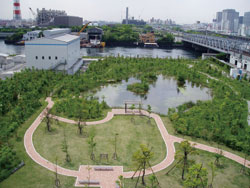 Biotope at the Shinagawa Thermal Power Station
Biotope at the Shinagawa Thermal Power Station
The Convention on Biological Diversity was opened for signature at the 1992 United Nations Conference on Environment and Development (UNCED), together with the Framework Convention on Climate Change. As of June, 2010, 193 countries and regions, including Japan, have joined the convention to discuss the international framework for biodiversity conservation.
With the Conference of Parties to the Convention (COP10) slated to be held in Japan in October 2010, various preliminary activities are gathering momentum within the country. Already, Nippon Keidanren (Japan Business Federation) issued a Declaration of Biodiversity in March 2009, and the Federation of Electric Power Companies of Japan formulated the Electricity Utility Industry's Action Guidelines for Biodiversity in April 2010. Even aside from these initiatives, we are seeing the formulation of many other policies and guidelines regarding corporate initiatives for biodiversity conservation today.
When building facilities, TEPCO gives due consideration to protect, conserve, and create the natural environment, we also assess the ecosystem of plants and animals living in the area to protect their habitat and create a suitable environment for them.
The planned site of the Higashidori Nuclear Power Station (Higashidori Village, Shimokita-gun, Aomori Prefecture) is a marshland that is home to rare plants and animals such as the scarce large blue butterfly and Japanese skimmer dragonfly. To prevent any impact on the marshland, we are restricting land development to the minimum necessary area. In the area marked for development, we transplanted blocks of marshland and developed a "biotope corridor" that connects the transplanted blocks with existing lakes and marshes to prevent the segregation of the natural wildlife habitat. Post-development surveys have confirmed the existence of the majority of living organisms that originally existed in the area.
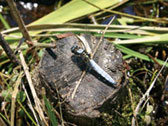 Orthetrum japonicum
Orthetrum japonicum
TEPCO utilizes its natural assets to carry out studies and research with a view to developing biodiversity conservation measures at its power facilities and establishing environmental assessment methods.
To create a natural environment for fireflies, ATEMA KOGEN RESORT INC. (Tokamachi City, Niigata Prefecture), a member of the TEPCO Group, implemented a demonstration test on firefly habitat.
The company surveyed environmental elements that support each life stage of the firefly (egg, larva, pupa, adult), and created an environment suited to their habitation. As a result, the environment has become home to more than 100 fireflies today, where there were only about 10 adult fireflies in 2003. The survey results will be utilized in performing environmental assessment surveys and in maintaining greenery.
ATEMA KOGEN RESORT INC.: www.belnatio.com (Japanese only)
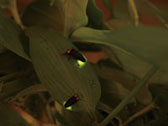 Luciola cruciata and Luciola lateralis
Luciola cruciata and Luciola lateralis
TEPCO owns about 70% of the Oze National Park Special Protection Area, which corresponds to about 40% of the entire national park. We inherited the land in the early 1900s at the time of establishment from a precedent electric power company, which originally acquired the land with the aim of utilizing its abundant water resources for power generation. When the power generation plan was abandoned thereafter, we came to recognize the beautiful nature of Oze as a national asset, and as our social responsibility as owner of the land, we have spent more than a half-century protecting the beautiful environment in cooperation with OZE Corporation, a member of the TEPCO Group.
OZE Corporation: www.tgn.or.jp/oze (Japanese only)
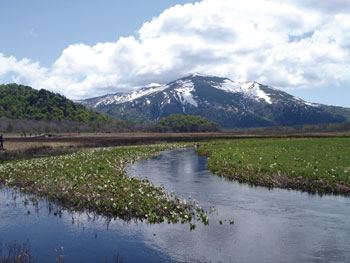 The white arum in bloom at Ozegahara (May - June)
The white arum in bloom at Ozegahara (May - June)
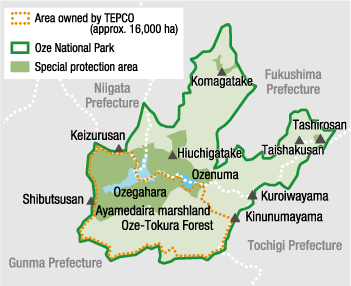 Map of Oze National Park
Map of Oze National Park
To allow visitors to experience the nature of Oze up close while minimizing any impact on the natural elements, wooden walkways weave through the park over a total distance of around 65 kilometers. TEPCO is restoring and renewing about 20 kilometers of those walkways in Gunma Prefecture. We also contribute to protecting the natural environment by developing environmentally-conscious public facilities. For example, we have upgraded public restrooms in the park by introducing septic tanks that are capable of purifying water to a quality that measures up to the water quality of natural rivers and installing photovoltaic generation facilities, and have also placed feet mats at the entrances to the park to prevent the intrusion of foreign plants.
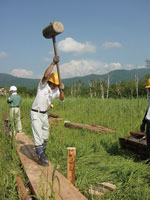 Maintenance of the wooden walkway
Maintenance of the wooden walkway
The Ayamedaira Marshland, located south of the Ozegahara Wetlands, was once known as Japan's celestial paradise. However, the booming popularity of Oze hiking in the 1960s brought vast numbers of visitors to the area and caused great damage to the marshland. We have been working to restore the natural environment of the marshland since 1969, and have so far succeeded in restoring as much as approximately 90% of the marshland's original green landscape.
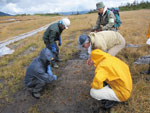 Restoring the vegetation of Ayamedaira
Restoring the vegetation of Ayamedaira
The Oze-Tokura Forest, where TEPCO has continued to implement forest conservation activities over many years as owner of the forest, has earned two forest certifications.
In August 2009, we became the first to be awarded the "Forest CO2 Absorption and Biodiversity Certification" (commonly known as "Forestock Certification") in recognition of the forest's CO2 absorption function, high biodiversity, and water/soil conservation. In February 2010, we acquired the FSC-FM Certification from the Forest Stewardship Council (FSC), an international forest certification institution, in recognition of our proper management of the forest with due consideration of the natural environment and local community.
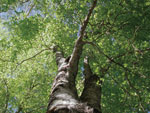 Large beech tree in the Oze-Tokura Forest
Large beech tree in the Oze-Tokura Forest
Yoshitaka Tatsui
Greening Management & OZE preservation Group,
Environment Department
The Oze-Tokura Forest is a vast watershed forest situated in the most upstream area of the Tonegawa River. Since 1965, TEPCO has been nurturing and managing this forest as a watershed protection forest for a hydropower plant located downstream of the river. In 1997, TEPCO began planting beech trees and other broadleaf trees and clearing the underbrush to growth saplings every year with the cooperation of some 300 volunteers.
The Oze-Tokura Forest is essentially "TEPCO's Forest." Taking the occasion of the recent certifications, we hope to further enhance its rich natural environment by dividing the forest into areas based on their condition, such as areas where the ecosystem needs to be protected, areas where more attention needs to be given to forest management, and areas that may be used for research and environmental education purposes, and engaging in forest management practices appropriate to each area in reference to expert advice and views.
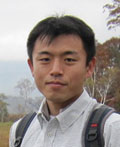
© Tokyo Electric Power Company Holdings, Inc.